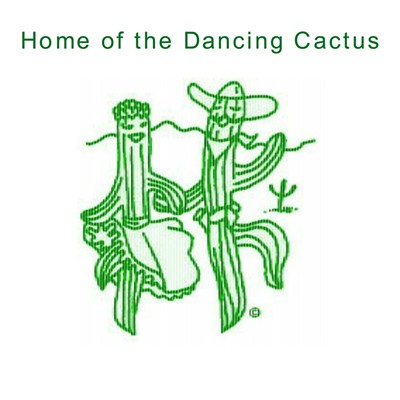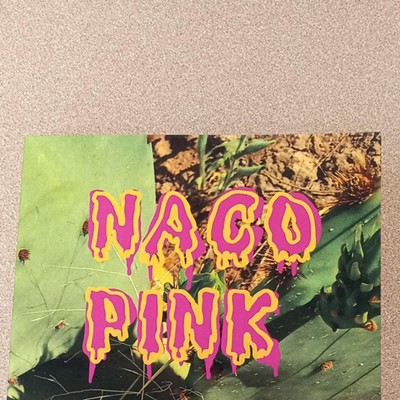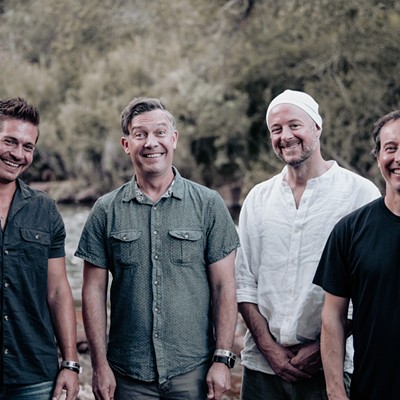Up in the Mojave, beyond the mountains, three giant towers rise up from the flat desert floor, piercing the cloudless sky. Thousands of mirrors are set up on the ground.
The five square miles of remote wilderness these structures occupy were still unmolested when photographer Jamey Stillings first arrived. But over the next two years, the landscape permanently changed. The three enormous towers, each 40 feet high, now compete with the mountains. The mirrors catch the rays of the sun, their glassy glare forever changing the desert light.
The pristine desert had given way to the world's largest solar power plant, the Ivanpah Solar Electric Generating System.
Stillings' dramatic photos documenting that change are now at Etherton Gallery in "Land Exposures," a three-photographer exhibition that's not only about photographic processes but about the tension between human activity and nature's beauty.
Before he ventured into the Mojave around 2011, Stillings was already an acclaimed photographer of vast constructions, noted especially for his stunning color photographs of the Hoover Dam Bypass Bridge.
The new photos, in black and white, were shot in short stints from a hired helicopter. Huge in scale like the Hoover bridge photos, these picture the Mojave's infinite skies, endless horizons—and the alien geometry of the power plant superimposed on the sweeping landscape.
"6424" from 2012 reduces the array of mirrors to a near-abstraction of shining white rectangles set against gray earth. This photo's dimensions mimic the enormity of the project: an archival pigment print, it's a monumental five feet across and nearly four feet high.
The photos have an ironic subtext: even projects conceived of as environmentally friendly—like a power plant that uses the sun to produce electricity—can desecrate the land, push out wildlife and gobble up water.
David Emitt Adams looks at smaller-scale desert devastation. He goes out and scavenges tin cans that litter the desert. Rusted, bent and sometimes shot up by bullets, the cans become the "canvas" for Adams' old-timey images of saguaros in black and white.
While Stillings uses up-to-the-minute digital equipment and crisp printing, Adams hearkens back to the 19th-century wet-plate collodion technology. He projects a transparent image right onto the treated surface of the can, and saguaros and sloping desert hills --- including Picacho Peak—gradually coalesce right on the metal. Past and present merge, and image and trash become one, in the process becoming a new medium: the photo sculpture.
A half dozen of Adams' works go after targets bigger than casual litter: oil refineries in New Mexico and Texas. Adams goes literal here, positioning his collodion images of the damaging derricks directly on the wide lids of oil drums.
Richard Laugharn is the most classic in this trio of contemporary landscape photographers. In his intimate—and beautiful—portraits of plants, he documents the slow changes wrought by nature. He's interested less in human interactions with the land than he is in the land itself.
He traveled down to the Pinacate in northwestern Sonora, a desert of extreme heat, little rain and few people. Returning again and again, he luxuriated in the slow shifts on nature's clock, and chronicled the slight evolutions in cacti and trees from one year to the next.
Laugharn photographed a magnificent specimen that he calls "The Sykes Crater Saguaro" at least five times. In 2013, he shot the Sykes emerging from a flat landscape. The following year, he took a different angle, and captured a slope rolling up to the right. Another time, he zeroed in for an extreme close-up of the saguaro's arms, and still another time he photographed it in the enveloping darkness.
Once he deviated from his usual black and white and used color for a double portrait of the green saguaro's beseeching arms. Placed side by side, against a sky of perfect blue, the duplicate saguaros reach for the light.
Land Exposures: Jamey Stillings, Richard Laugharn & David Emitt Adams
11 a.m. to 5 p.m., Tuesday to Saturday, through Jan. 3, 2015. Closed Christmas Day and New Year's Day.
Free
Etherton Gallery 135 S. Sixth Ave.
624-7370;














